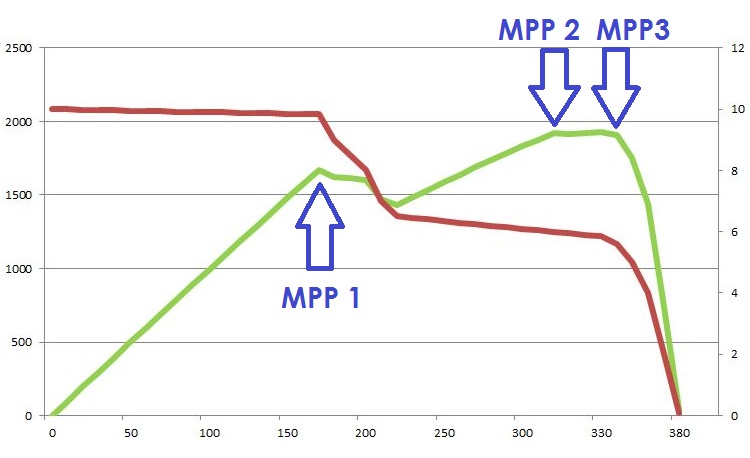What is an MPPT tracker?
A Maximum Power Point Tracking (MPPT) tracker is an electronic controller used to maximize the efficiency of solar panels by finding the point at which the panel delivers the most power.
Solar panels have a specific operating voltage and current at which they produce the most power, called the Maximum Power Point (MPP). When the solar panel is not operating at the MPP, less power can be generated and energy is lost.
The MPPT tracker continuously measures the current and voltage supplied by the solar panel and adjusts the load on the panel to find and maintain the MPP. This results in higher efficiency and higher solar panel output.
MPPT trackers are often used in solar power systems to maximize the output of the panels to reduce the amount of solar panels required.
How many MPPT trackers do I need?
How many MPPT trackers you need depends on the solar power system you have or plan to build. In most cases, one MPPT tracker is sufficient for a small solar panel system with only one or a few solar panels.
However, if you have a large solar power system with multiple solar panels connected in series or if you have several arrays of solar panels placed at different orientations or slopes, you may need to install multiple MPPT trackers.
In these situations, it may be advantageous to have a separate MPPT tracker for each string or array of solar panels. This can further improve system efficiency by ensuring that each string or array operates at its own maximum power point.
How many MPPT trackers are on an inverter?
How many MPPT trackers are on an inverter depends on the specific model of the inverter.
Some inverters have only one MPPT tracker, while others have multiple MPPT trackers. Generally, inverters intended for small to medium-sized solar systems have one or two MPPT trackers. Inverters for larger solar power systems may have four or more MPPT trackers.
The number of MPPT trackers on an inverter is important because it affects how solar panels are connected to the solar power system.
For example, if an inverter has only one MPPT tracker and the system has multiple arrays of solar panels placed at different orientations or inclinations, these arrays may need to be connected in parallel. This can reduce the efficiency of the system because the solar panels are not all operating at their own maximum power point.
With multiple MPPT trackers, each array or string of solar panels can be individually connected to a separate MPPT tracker, which can result in higher solar system yields.
So it is important to check the specifications of the inverter and make sure it has the right number of MPPT tracers for your particular solar system.

Shadow
The inverter with an MPP tracker can stand out especially in the case of shade, as shown in the graph of 10 solar panels with shade and 3 MPP points. A cheap inverter will increase the voltage and think that the MPP point is reached at about 170 volts, which is not correct, considering the power will increase again later. In contrast, a good inverter with a reliable MPP tracker will look at almost the entire area to determine its points. However, drawing an MPP curve takes time and energy, so older and cheaper inverters spend a lot of time on this and lose percent of yield on an annual basis. However, newer and better-developed inverters can perform this process quickly and almost continuously, especially by reacting quickly to shade, allowing the inverter with a reliable MPP tracker to generate up to 10% additional yield.
